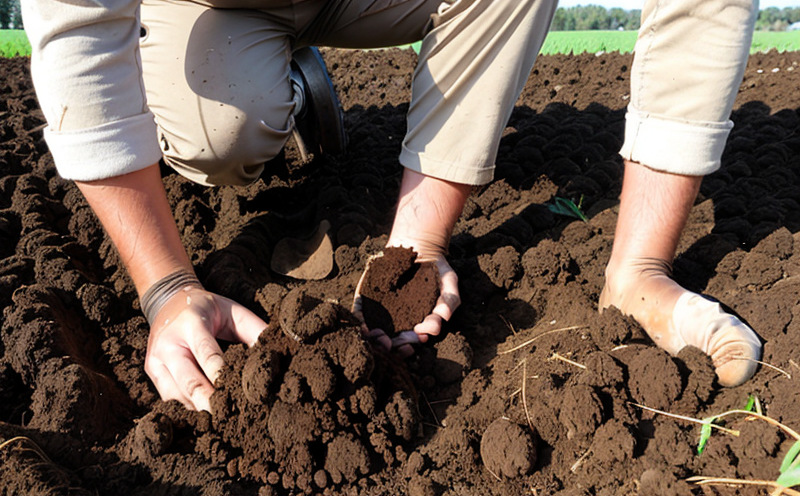Soil Runoff Potential Testing
The Soil Runoff Potential Testing is a critical component in assessing the susceptibility of soil to erosion and the potential for waterborne pollutants. This testing service evaluates how effectively a soil sample can manage rainfall, thereby preventing runoff that could carry sediments, nutrients, or contaminants into nearby water bodies.
The primary goal of this test is to provide valuable data on the stability of agricultural lands, forests, and other natural environments susceptible to erosion. By understanding which areas are at higher risk for runoff, landowners, farmers, and environmental consultants can implement targeted measures to protect these resources. This service supports sustainable agriculture practices, ensuring that soil health remains intact and that water quality is preserved.
The test involves a series of steps designed to simulate natural conditions while providing accurate measurements. Soil samples are prepared according to specific protocols outlined in international standards such as ISO 14655:2021 and EN ISO 14793:2018, which guide the testing process for soil erosion control.
During the test, rainfall is simulated using a controlled environment where the amount of water applied can be precisely measured. The runoff is collected and analyzed for various parameters including sediment load, nutrient content, and pollutant levels. This data helps in identifying weak spots within the soil that may require additional protection or management.
The results from this testing are essential for making informed decisions regarding land use planning, conservation efforts, and agricultural practices. For instance, farmers can use these insights to choose appropriate crop rotations or irrigation methods that minimize runoff while maximizing productivity. Environmental consultants also rely on such data when proposing mitigation strategies for areas prone to erosion.
Understanding soil runoff potential is crucial not only in agriculture but also in forestry where disturbances like logging roads and clear-cutting sites can increase the likelihood of erosion. By conducting regular tests, land managers can ensure that their operations align with sustainability goals and comply with environmental regulations.
International Acceptance and Recognition
The Soil Runoff Potential Testing is widely accepted across various regions around the world due to its relevance in addressing global challenges related to soil degradation, water pollution, and climate change. The results of these tests are recognized by regulatory bodies such as the European Commission (EC) under their environmental directives, including those aimed at preserving biodiversity and reducing greenhouse gas emissions.
Moreover, international standards like ISO 14655:2021 provide a consistent framework for conducting this type of testing, ensuring that comparisons between different studies are valid. Compliance with these standards is important not only for academic research but also for practical applications in industry and government sectors.
Use Cases and Application Examples
| Application Case | Description |
|---|---|
| Agricultural Land Evaluation | Determine the suitability of land for cultivation by assessing its resistance to erosion. |
| Forestry Management | Identify high-risk areas where reforestation efforts might be needed due to increased runoff risks. |
| Erosion Control Planning | Assess the effectiveness of proposed measures aimed at reducing soil erosion in specific regions. |
| Water Quality Monitoring | Analyze the impact of agricultural activities on local water bodies by tracking changes over time. |
- Agricultural Land Evaluation: This involves evaluating different parcels of land to determine which ones are best suited for various crops based on their resistance to erosion.
- Forestry Management: High-risk areas identified through this testing can guide reforestation initiatives, focusing resources where they will have the greatest impact.
- Erosion Control Planning: Proposed measures such as terracing or planting cover crops can be evaluated for their effectiveness in reducing soil loss.
- Water Quality Monitoring: Changes in water quality over time due to agricultural practices can be closely monitored using this testing method.
Why Choose This Test
- Precise measurement of runoff potential under controlled conditions.
- Compliance with international standards ensuring accurate and reliable results.
- Supports sustainable land management practices by identifying weak points in the soil.
- Provides actionable data for making informed decisions about land use and conservation efforts.





